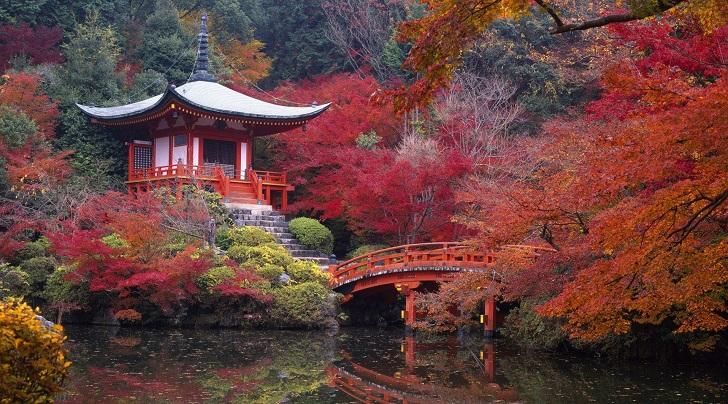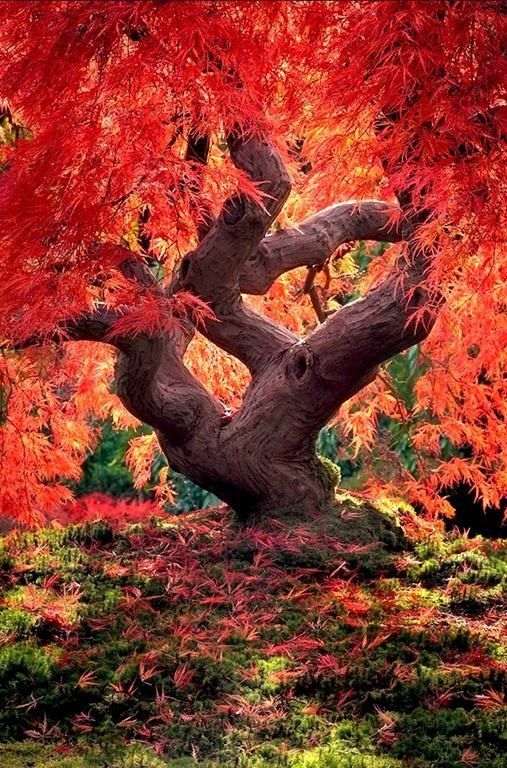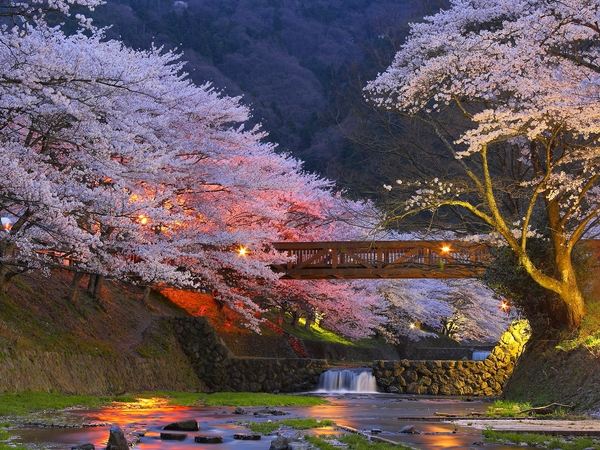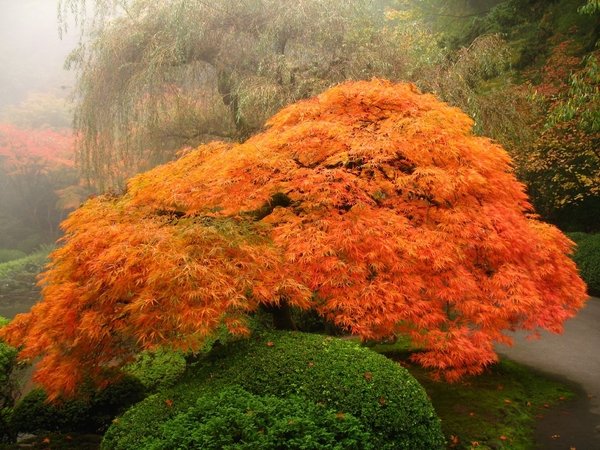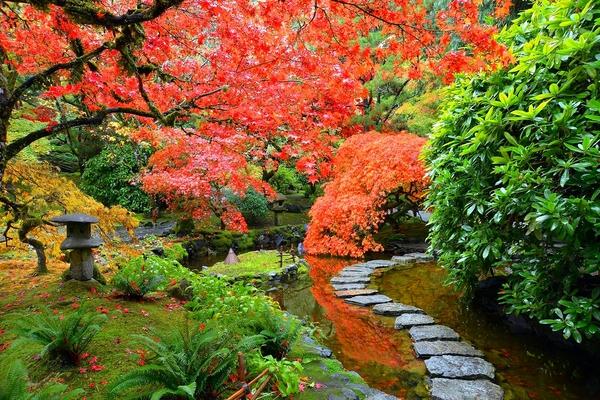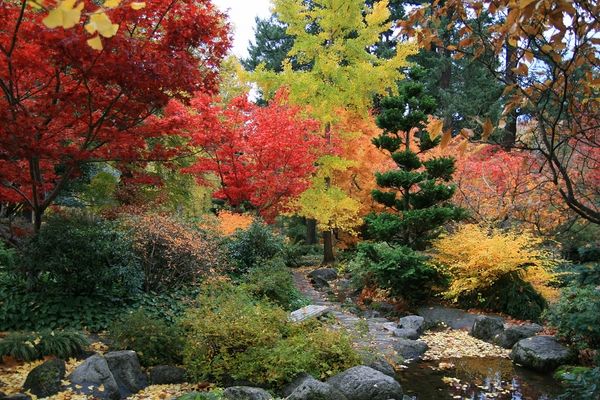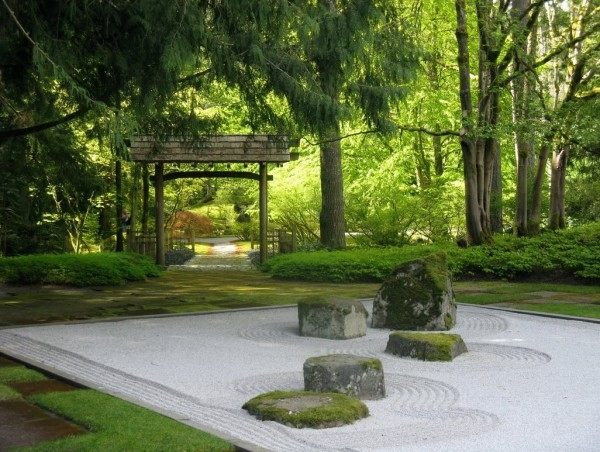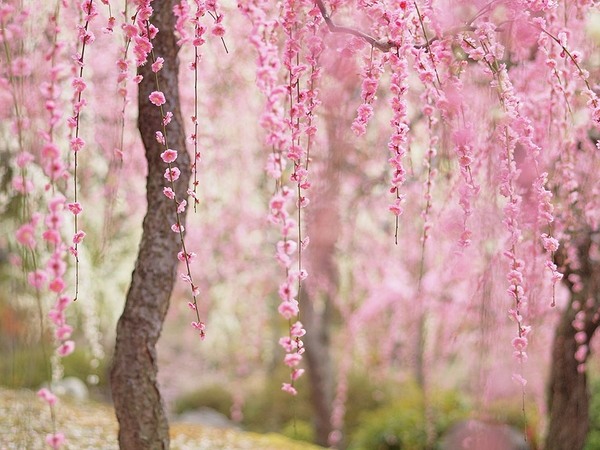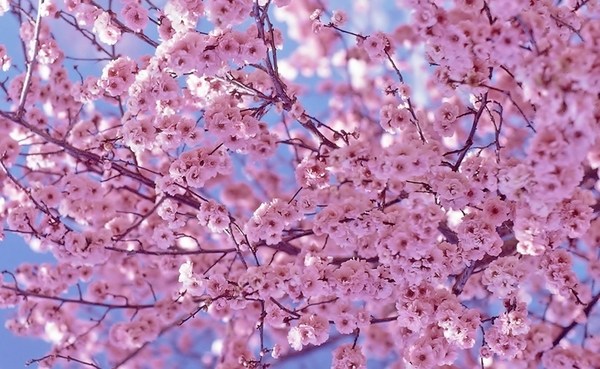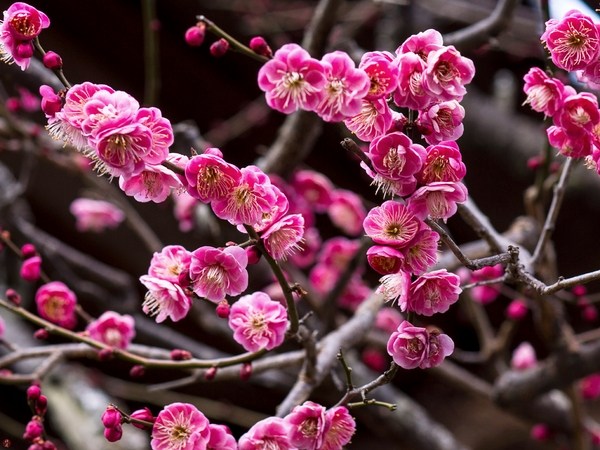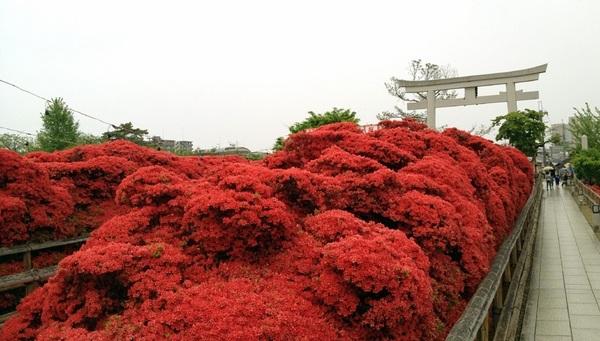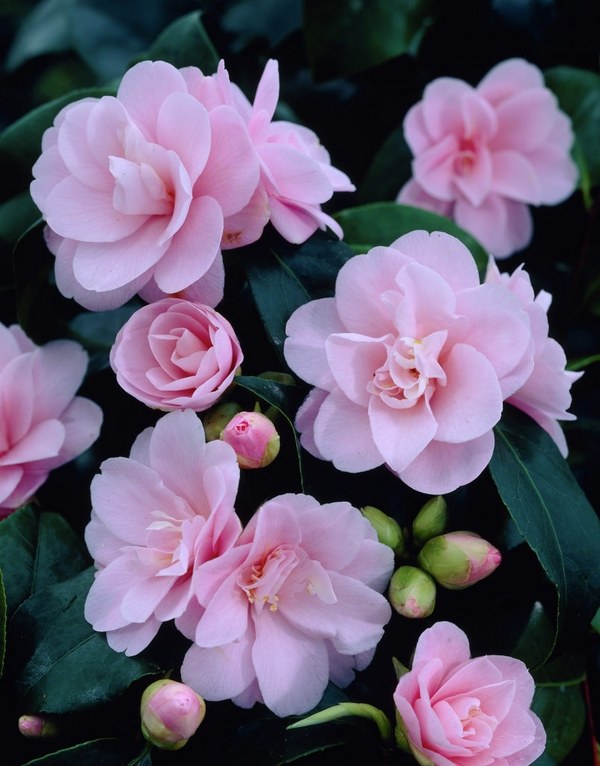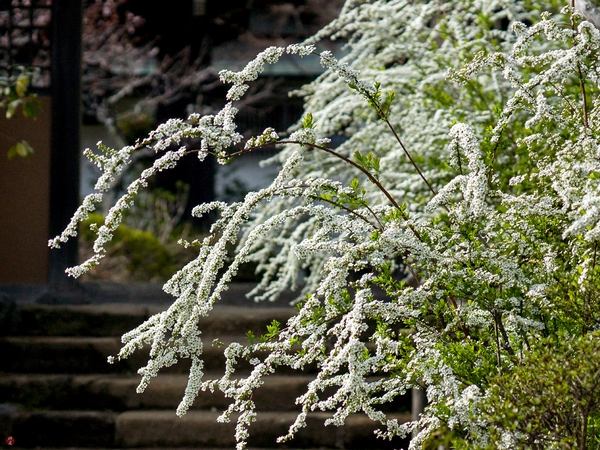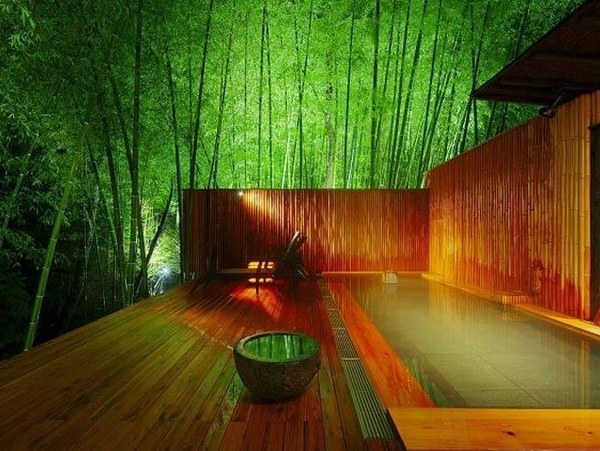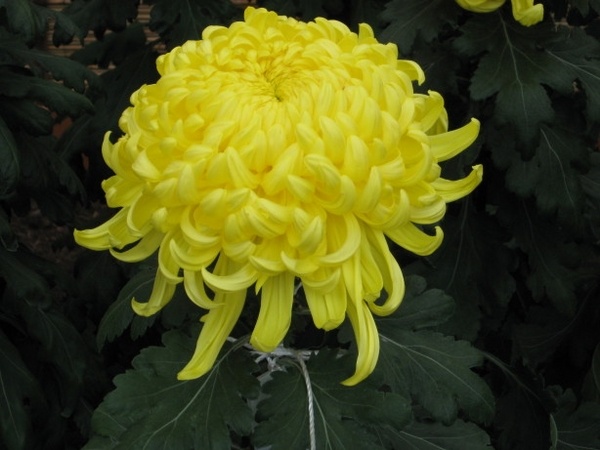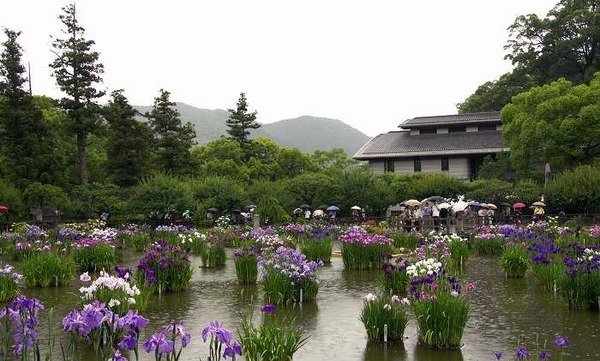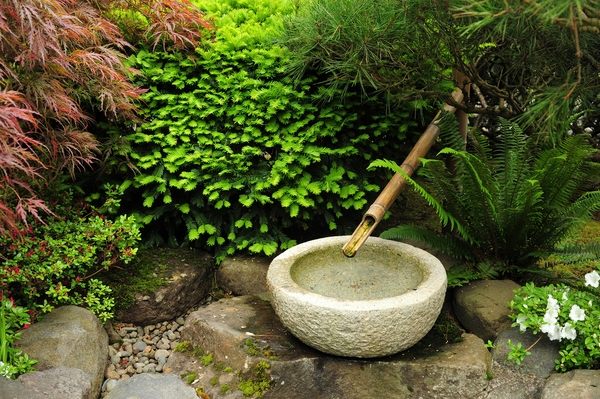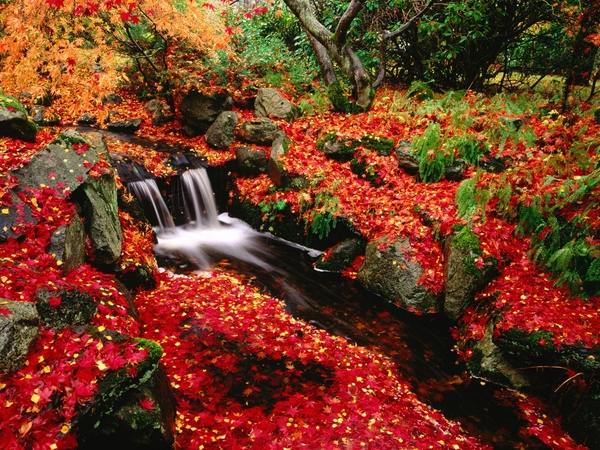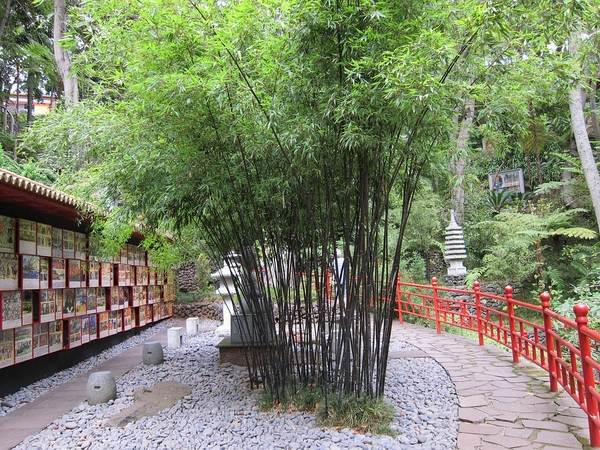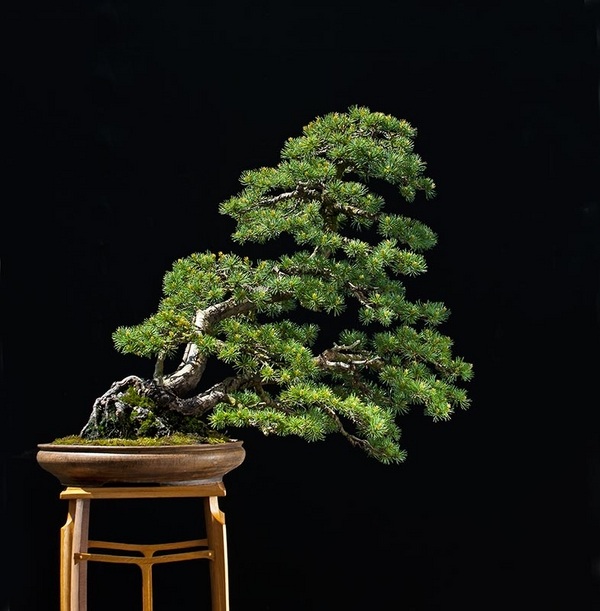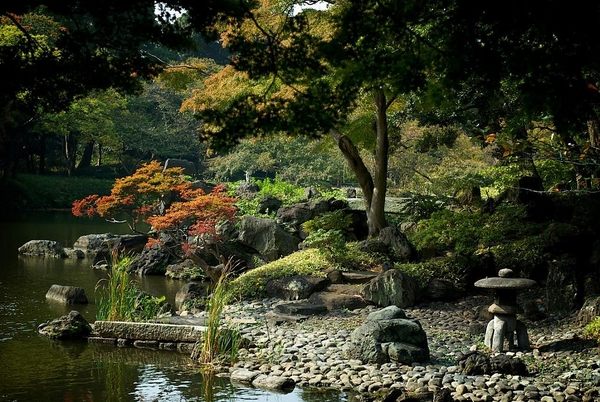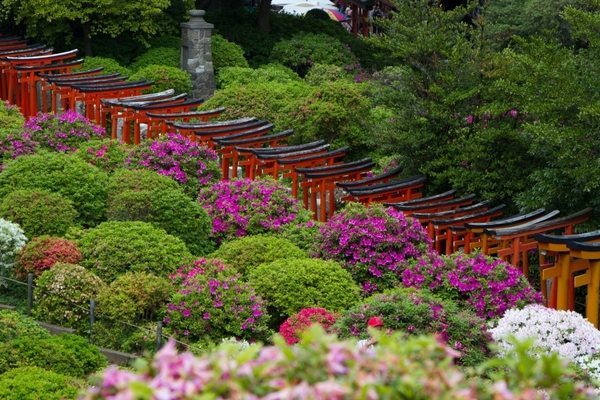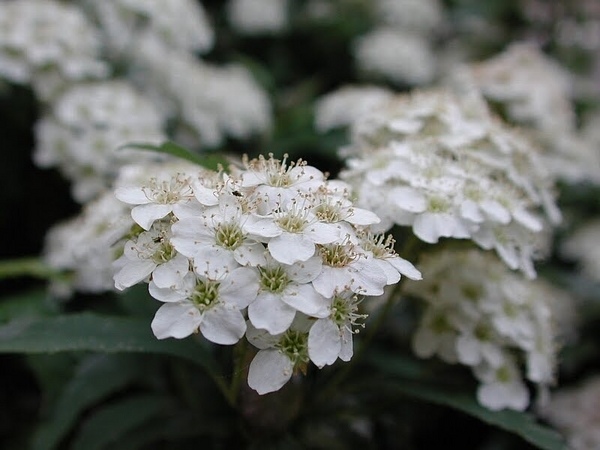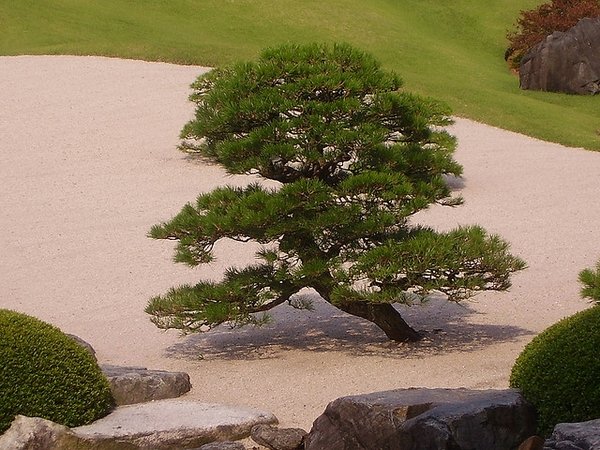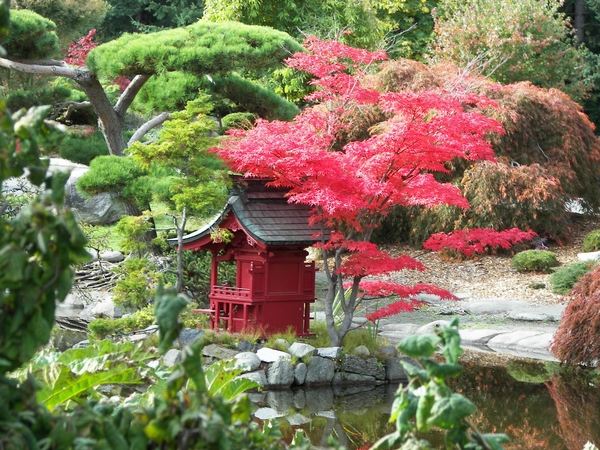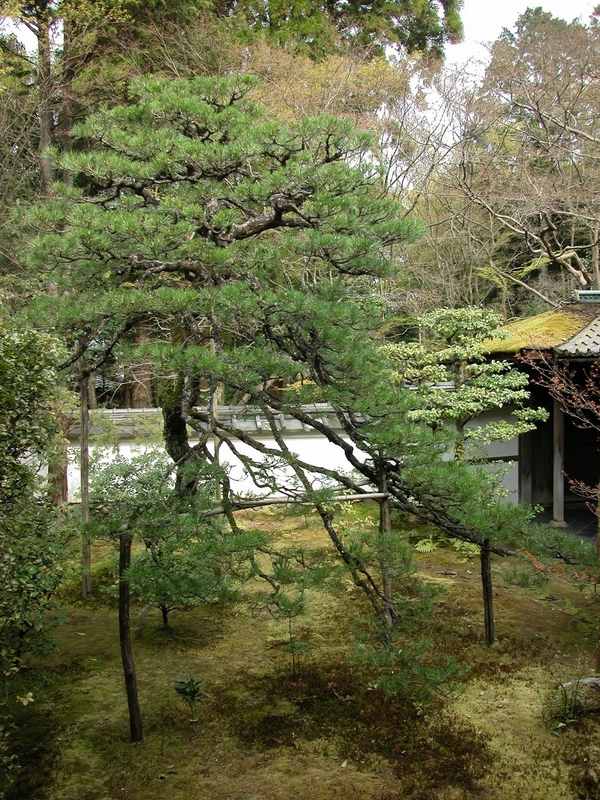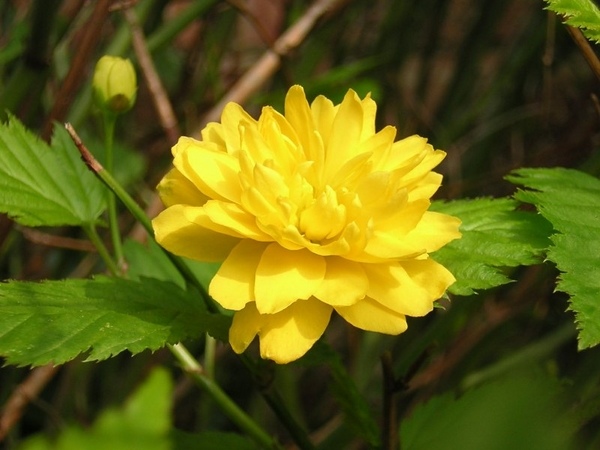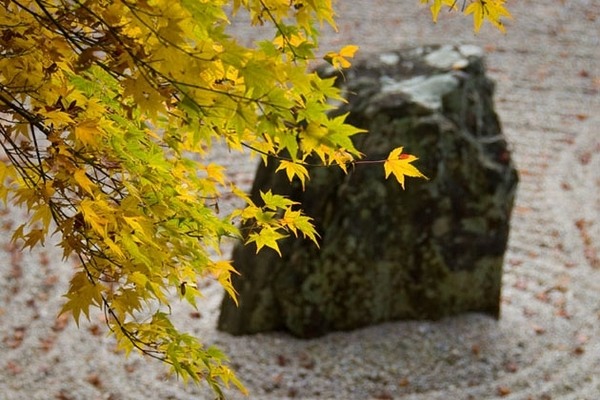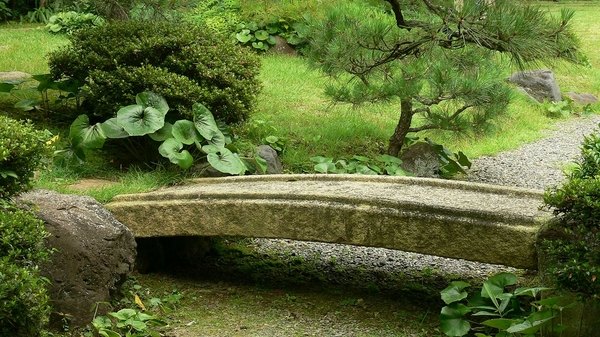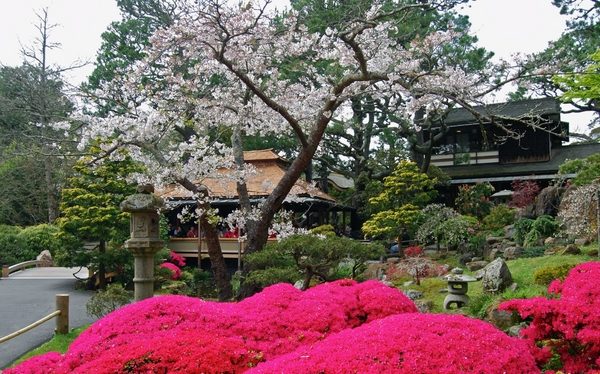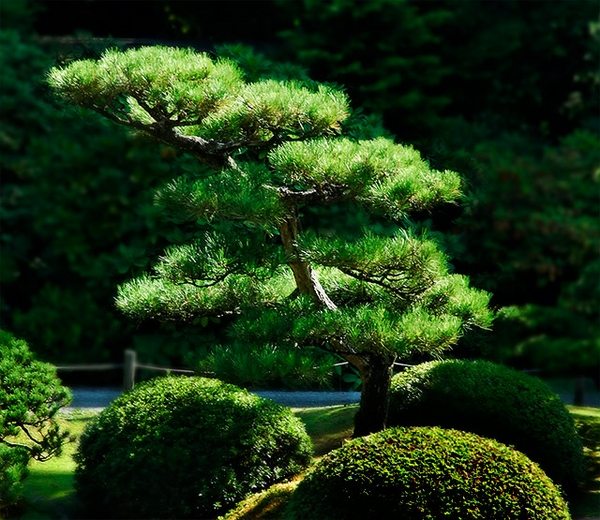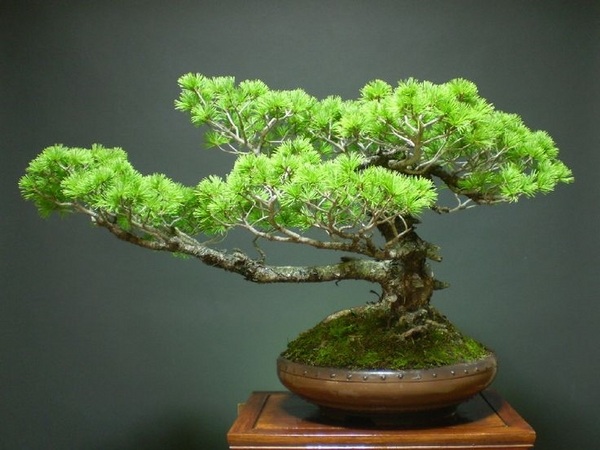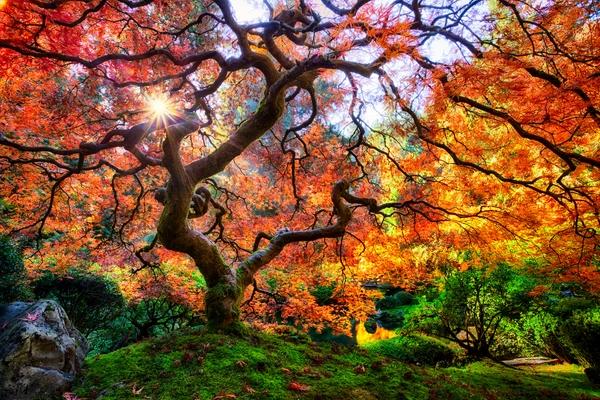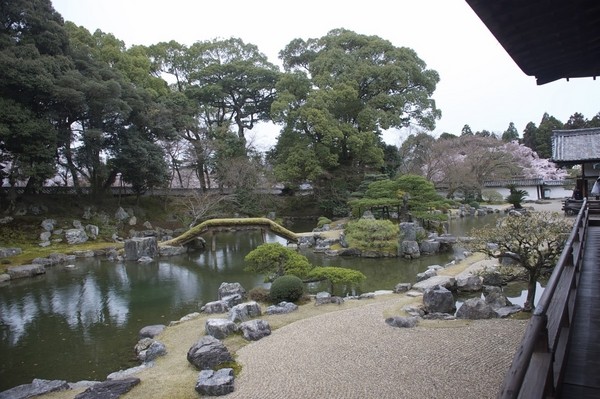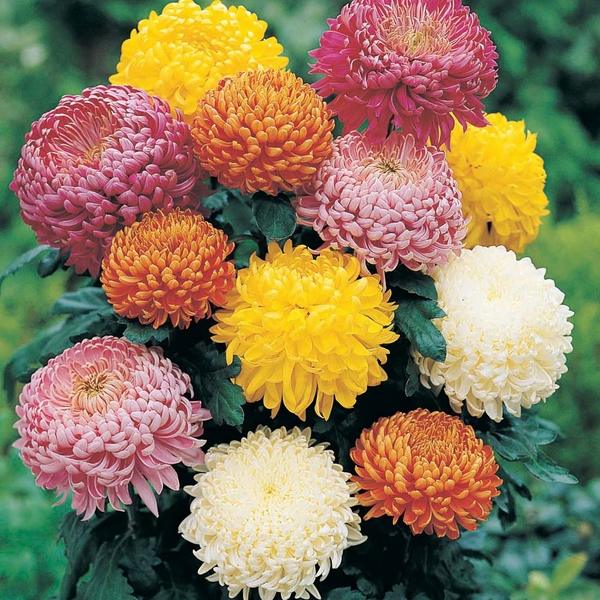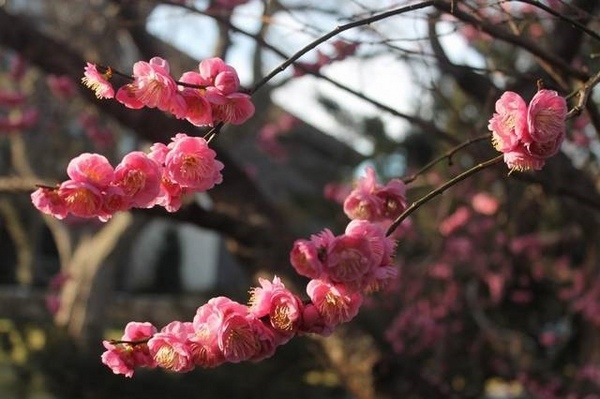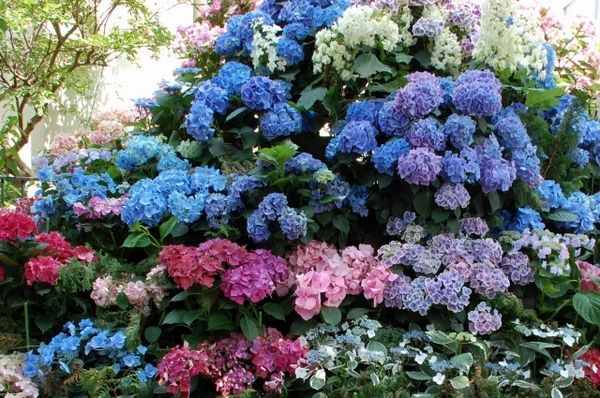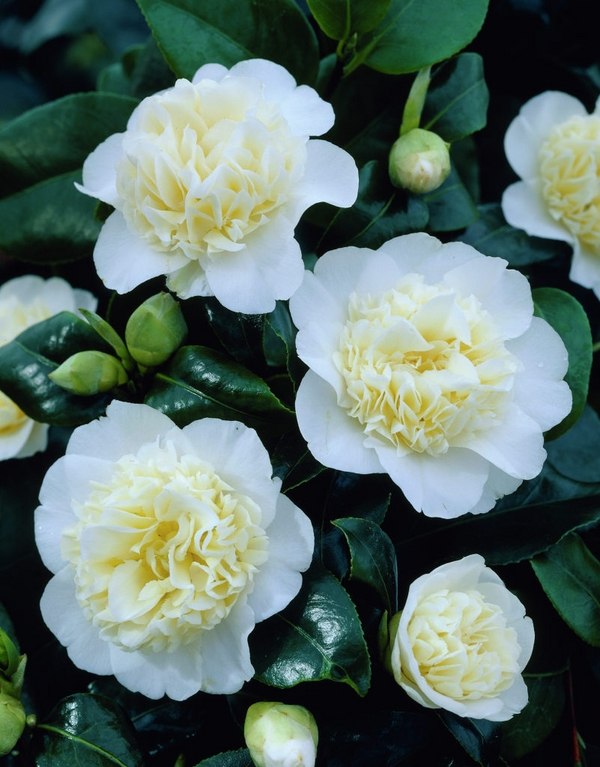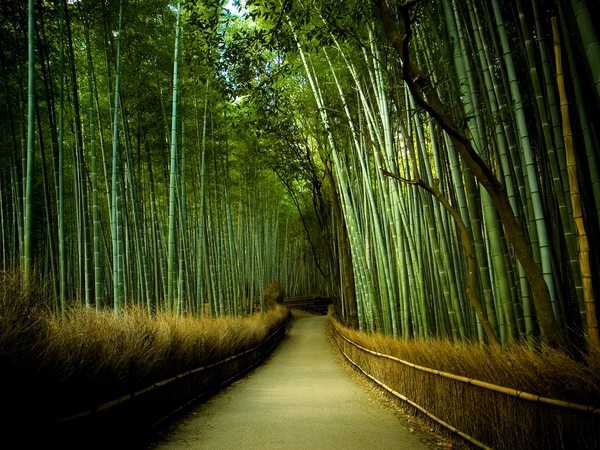What are the typical Japanese garden plants? How to create a beautiful balanced landscape which makes us feel tranquility and peace of mind? A typical garden consists of a number of plants that are quite unique in shape. Japanese gardeners have been breeding plant species for centuries and have developed them to reflect the principles of Japanese philosophy and culture.
A Japanese garden is designed to radiate tranquility and harmony. It has different elements combined in a well thought way with a lot of attention to detail. You will not see a wide variety of colors and species. The variety of shades, shapes and textures, the play of light and shadows are much more important. The choice of plants is based on the attractive appearance not only during spring and summer but throughout the year, so that the viewer can enjoy the change. The main goal is to create a harmonious environment and a perfect vision – for example, show the rich colors of maples in autumn, the austere beauty of coniferous trees in the winter and the leafless trees covered with frost or snow.
How to choose Japanese garden plants for your garden?
In a classic Japanese garden, as we have already noted, the main importance is given to the reconstruction of the natural landscape. Water, rocks and stones are of great importance and plants play the role of visual accents that balance the overall design. That is why Japanese garden plants should be chosen very carefully and when you want to create an authentic feeling, you should not plant a big variety of plants, sometimes one type of plant can be more than enough – just think of the famous sakura gardens.
It is very important to consider the local weather conditions and choose the right garden plants which will be able to survive in your climate zone. Many species are sensible to frost, so it will be best if you chose varieties that are adapted to the climate in your area. For example, the main conifers are Japanese Black Pine, known as Thunberg pine (Pinus thunbergii) and Japanese red pine ((Pinus densiflora). They can be substituted with Scots pine (Pinus sylvestris) which is a species typical for Europe. Consult an expert so that you can combine the right species of ornamental trees and shrubs, flowering perennials, grasses, bamboos and ferns to create the perfect garden design. As important the choice of plants is, another very important decision is where you plant them. Different species thrive in different conditions – for example azaleas will feel best near a garden pond while ferns and moss work best with garden paths.
What are the typical Japanese garden plants?
We have selected a list of the typical Japanese garden plants to give you a list and some tips on the special requirements of the different species. Generally, plants can be divided in four main groups – trees, flowering trees, shrubs and the fourth group consists of flowers, ferns, bamboos and mosses.
The most typical green trees varieties
Green is more important than the rich colors of blooming flowers. The change of green color throughout the seasons of the year is essential and that determines the choice of trees in accordance with the main idea of the design.
Japanese maple trees are world famous for the magnificent foliage and one of the most popular ornamental plants in Japan. There are many vaieties of maple and each one has a special color and leaf shape. Acer palmatum, (Iroha-momiji), Acer palmatum var. sanguineum (Nomura-momiji), Acer amoenum var. matsumurae (Tamuke-momiji) are some of the most popular maple varieties. Japanese maple is the perfect choice for both small and large gardens. The beauty of the different shapes of leaves, the bright autumn colors are greatly appealing to people and in autumn maple trees are a real stunner with the fabulous yellow, orange, crimson, fiery red or purple color of the leaves. Maples can be planted in a group or as a single tree, preferably in a pond garden and whichever maple variety you choose, the Asian elegance will be a part of your garden.
Pine trees are a symbol of longevity, courage and power and without any doubt – the most typical for Japanese gardens. Black pine (Kuromatsu), white pine Goyoumatsu (Pinus parviflora), Japanese black pine (Pinus thunbergii) are the species that you will see most often. Light green or silver-ish, the needles of the pines and the silhouette of the trees are symbolic to the gardens in Japanese style. Pines are popular as bonsai trees as well.
Flowering trees
Cherry trees are classic. They are a symbol of purity, prosperity, fortitude, and have become a symbol of Japan. Cherry blossom is magnificently beautiful and highly appreciated and valued. You can choose from different cherry tree varieties – some of them have white, others have pink blossoms.
Somei Yoshino(Yoshino Cherry) blooms before the leaves appear and its petals are almost white and slightly pink. Yamazakura is the most common cherry tree variety of Japan and it actually grows wildly in nature. Its blossoms are slightly pink and the fresh leaves develop at the same time as the blossoms. Shidarezakura (Weeping Cherry) trees have drooping branches and are among the most common and beloved cherry trees in Japan with beautiful pink blossoms.
The group of flowering trees includes Ume (Japanese apricot) blooms at the end of winter in red, pink, or white. Kobushi Magnolia blooms very early in spring and its magnificent white blooms are a notification of the coming spring. Kousa dogwood (Yamaboushi) is blooming in June. The flowers are white with a star shape. Magnolias prefer sheltered, sunny to partial shade and well drained, neutral soils.
Typical shrubs
Japanese azaleas can turn any garden into a sea of color. Satsuki azalea Rhododendron (Satsuki) is the most popular azalea. It blooms around June and the petals are between red and pink. Satsuki azalea is incredibly popular as a bonsai as well. Kirishima azalea rhododendron has crimson petals and when it is in full bloom, shrubs are covered with red flowers. Hirado Azalea Rhododendron, Doudan azalea Enkianthus are also a good choice when you choose the plants for a Japanese garden.
Hydrangeas and camellias are also typical plants for Japanese gardens and there is a good number of options to choose from. Camellias can bloom in different colors depending on the species – from tender pink to deep red. Hydrangeas are the perfect choice for planting around a pond as they thrive in humid environment. Hydrangeas can be planted in a flower bed or in a planter box or container as well. They are easy to care for, but you need to pay attention as Hydrangeas require a spacious spot.
Spiraea cantoniensis (Kodemari) and Spiraea thunbergii (Yukiyanagi) have weeping branches and bloom in pure white with many small flowers but if you prefer yellow blooms Japanese kerria (Yamabuki) or (Rengyou).
Bamboo, flowers, ferns and mosses
Bamboo is the best known Asian plant. There are more than 300 different varieties and you should find something for your home garden without any problem. In addition, bamboo is the fastest growing plant ever. Bamboo loves shady to semi-shady places and moist soil.
Chrysanthemum (Kiku) is the national flower of Japan and a symbol of longevity and rejuvenation. It is a symbol of the sun and its image can be seen on Japanese prints. It is the most celebrated of all Japanese fall-flowering plants. Chrysanthemum is used in the badge for the Order of the Chrysanthemum and is also one of the national seals and a crest used by the Emperor of Japan and members of the Imperial Family. Chrysanthemum come in a variety of colors, but when you choose the ones for your garden you should know that white Chrysanthemum are used for funerals and graves in Japan, while red Chrysanthemum are given to the person you love.
Irises (Shoubu) (Iris ensata), an easy-care flower that loves wet conditions. Its leaves symbolize the samurai swords. Iris looks best when planted in large groups near water. Hanashoubu, Ayame and Kakitsubata are the three most popular Iris varieties in Japanese gardens.
Mosses and ferns are also typical plants for a Japanese garden. They will feel comfortable in any garden with a shady, moist area. Mosses and ferns are not demanding but add texture to the garden design and moss softens the lines and contours of garden paths and rocks.
Hopefully, the Japanese garden plant list is helpful and you will find useful information to be able to create a Japanese garden to please not only your eyes but to calm your soul.

